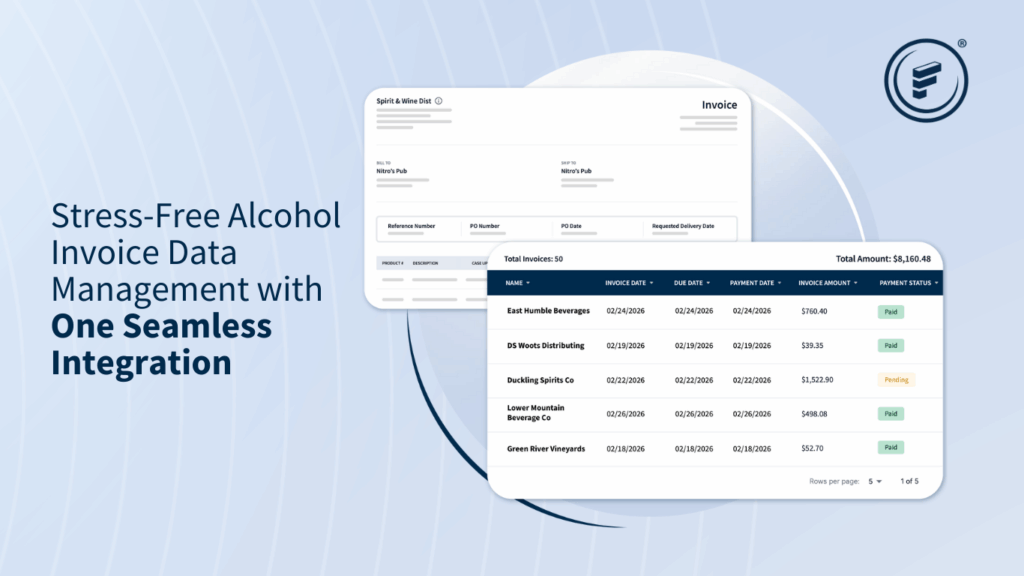This is a guest blog from our friends at The Fork CPAs.
Electronic Data Interchange (EDI) integration facilitates the communication of information and documents like invoices, credit notes, and payment information between businesses. Setting up an EDI integration between your restaurant’s inventory/POS and/or accounting system and your vendors provides you with expedited and accurate information and reduces or even eliminates manual input. In this blog, we’ll walk you through the benefits of EDI with Fintech and how to prevent or mitigate issues we have experienced as accountants.
Optimize Your Invoice Line-Item Data Input
An EDI integration directly benefits you and your restaurant’s team by saving time and legwork. Invoices are submitted by the vendors and viewable in the Fintech system. From there, your invoice line-item data will be automatically available through EDI integration into your accounting systems, like Quickbooks, R365 Accounting, and/or MarginEdge. The EDI system will check for duplicates via invoice numbers. This prevents double-counting, which can throw off your margins and cause lead to more manual work tracking the error.
Other benefits of EDI can be classified into two broad categories: benefits to your accounting and benefits to your vendor relationship.
Accounting Benefits of EDI
The accuracy, timeliness, and consistency of your financials improve by implementing EDI into your back-office or accounting system. First, the vendor provides the invoicing information when the order is placed. Then, the Fintech EDI automatically codes this invoicing information to create accurate cost information broken into product, quantity, unit price for line items, and any separate charges or credit memos. The unit price is a required field for distributor invoices.
Finally, this information syncs into your accounting system, providing expense and inventory data. The EDI’s consistent GL coding prevents the potential for errors allowed by manual coding. It ensures that products that could technically fall into more than one cost coding are coded consistently invoice-to-invoice. By implementing EDI, you get real-time data on your inventory and expenses, allowing you to make responsive and effective decisions to protect your margins.
EDI systems with automated payments also benefit your accounting by tracking when bills are paid, in what amount, and by what method. With this information automatically syncing into your accounting system, you never have to guess your AP’s accuracy again and have stronger control and understanding of your cash flow. EDI paired with autopay also helps you avoid late fees by ensuring bills are paid on time and provides you with a way to clearly track the payments if a payment is late or delayed somewhere in the process.
EDI Benefits to the Vendor Relationship
EDI also benefits the vendor relationship by building trust and keeping the bills and bill payments organized and on time. A shorter time between invoicing and payment may help you get better payment terms with your vendor, reducing costs and eliminating late fees. EDI and autopayments also help you get off COD, helping you with cash flow.
Note that vendors typically paid COD may be less likely to provide regular statements. Getting these vendors set up with EDI becomes very important not only so that you can get more favorable payment terms but so that payments can be properly reconciled in the accounting system.
Vendors set up with EDI integration and payment through that system are generally paid electronically. This eliminates the potential for lost checks, checks that are late in the mail, and issues with matching the check with the open invoices – a benefit to BOTH the vendor relationship and your accounting!
EDI Challenges
As you might expect, the two biggest challenges with EDI are:
1) Ensuring the integration and coding are set up correctly from the beginning.
2) Spot-checking to ensure the vendor provides no errors.
The first challenge is mitigated by carefully going through all the bills and making any corrections with the EDI team before those errors (usually in coding) become perpetual. Additionally, you can have an experienced team like the Fork CPAs set up the mapping into the accounting system to ensure that your financials are perfect from Day 1.
The second challenge is more ongoing and pops up most frequently when the invoice provided by the vendor to the EDI is not final or when the delivery received does not match the order that was placed. In either case, it is technically the vendor’s responsibility to make those corrections from their side by issuing a credit memo. However, if a delivery does not match an order, it may be necessary to upload an adjustment from the operator’s side manually. The accounting team can also manually record an adjustment/credit memo in the accounting system.
Fintech allows users to open a dialogue with their distributors directly through the portal to address credit requests. These types of errors and corrections should be rare. If they are, it may be time to revisit the vendor relationship because these types of issues would be even more time-consuming if you were not using EDI.
Depending on the level of integration and attention in your EDI, you may need to watch for manual adjustments to the documents uploaded. For example, suppose you write that a $200 invoice should be reduced by $80 for goods damaged in transit. In that case, the EDI may compare your uploaded bill with the bill they received from the vendor and use the vendor’s original amount ($200) instead of your hand-written reduced amount ($120). This is why spot-checking is important, and it’s critical to maintain a clear relationship with your vendor so that they can issue official credit memos for those types of adjustments to ensure that the EDI is 100% correct and on track.
If you have more questions about EDI between Fintech and your accounting system, or need help getting started, contact us.
To better understand why EDI invoicing is transforming operations for restaurants and retailers, read our related post: 6 Reasons Why Your Business Should Be EDI Invoicing.






